Art manifests in many ways and has a powerful emotional impact. Artistic expressions convey messages and reflections about the importance of protecting our planet and promoting a sustainable and environmentally friendly lifestyle through mediums such as music, literature, painting, and others.
Art has the power to inspire people to reflect on and act upon environmental issues. Although it cannot directly solve environmental problems on its own, it is often an influential tool for raising awareness and motivating positive changes in people.
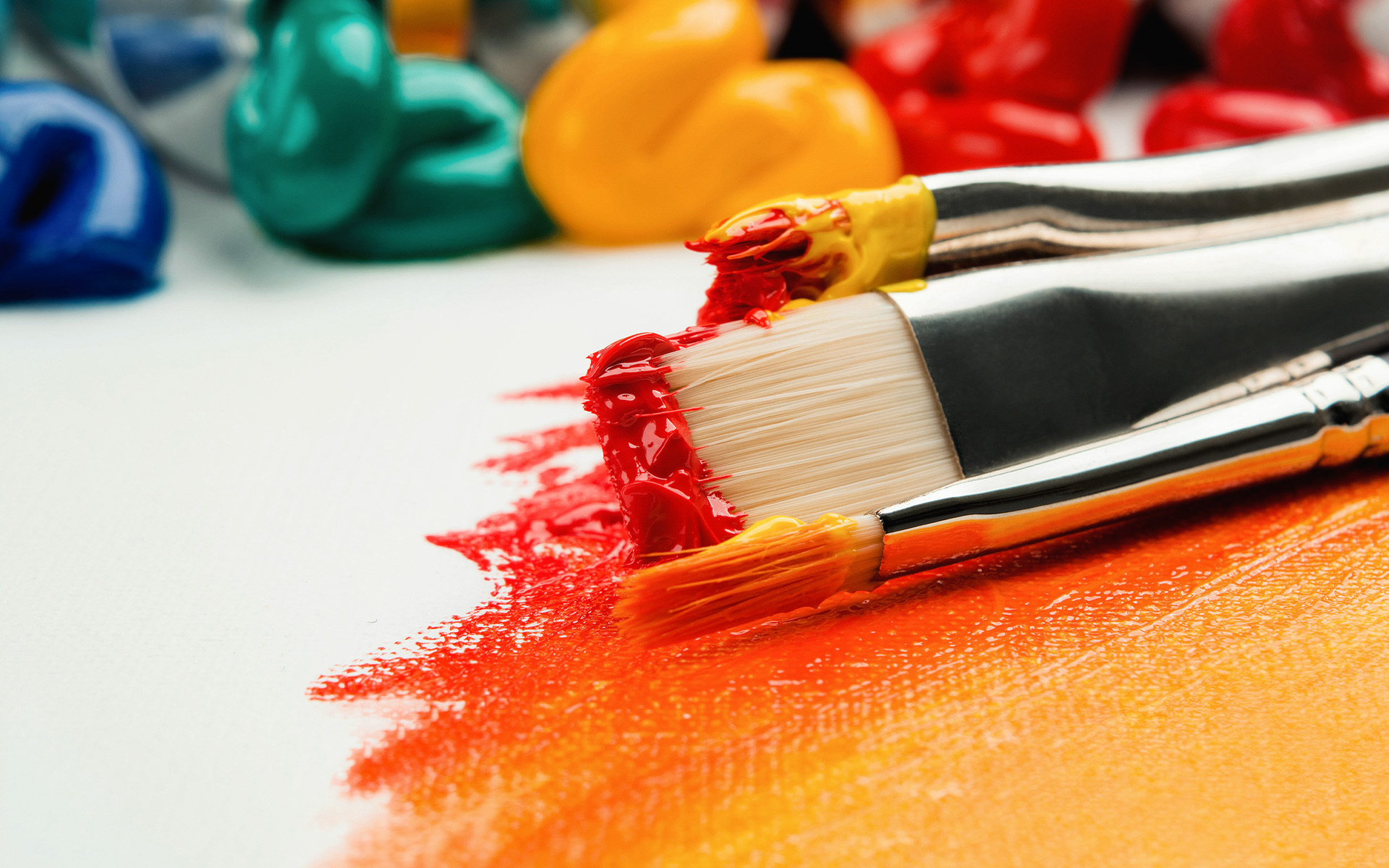
For example, music, painting, literature, and other forms of artistic expression convey messages about the importance of protecting our planet, promoting sustainability, or informing us about human rights.
In what ways can art influence our actions to save the planet?
Awareness is a very important point. Through works that reflect the beauty of nature and the effects of climate change, it is possible to warn us about the urgency to act. Additionally, artists can use their work to inform the public about environmental issues and how collective and individual actions make a difference. On the other hand, one of the goals of these works is to inspire people to value the environment and to seek ways to live more sustainably. In summary, artistic expressions can mobilize communities to participate in environmental conservation activities, activism, and the protection of endangered species.
There are many artists who seek to raise awareness about climate change through their works. In this case, we will mention some of the most interesting ones.
Nevada Rivers Project
The “Nevada Rivers Project” by Daniel McCormick and Mary O’Brien consists of sculptures placed in the rivers of Nevada. These works are not only artistic but also have a practical function, as they provide a habitat for various creatures and help restore the area’s biodiversity.
The Californian artist Daniel McCormick began creating artworks as ecological interventions and restorations in the early 1990s. Together with artist Mary O’Brien, he founded Watershed Sculpture, a studio aimed at addressing sites in need of environmental remediation. Through their sculptures, located on public lands and open spaces, they work to restore the balance of watersheds and other ecosystems that have been negatively impacted by rural and urban communities.
The elements used to create the artworks are collected from the places where they work, such as willow cuttings and other flora. The artists weave these natural materials into large basket-like shapes, which they then place on riverbanks. Over time, the sculptures become habitats for fish and other animals, sediment traps, erosion control devices, among other ecological improvements. Eventually, they disappear and become compost without producing any pollution.
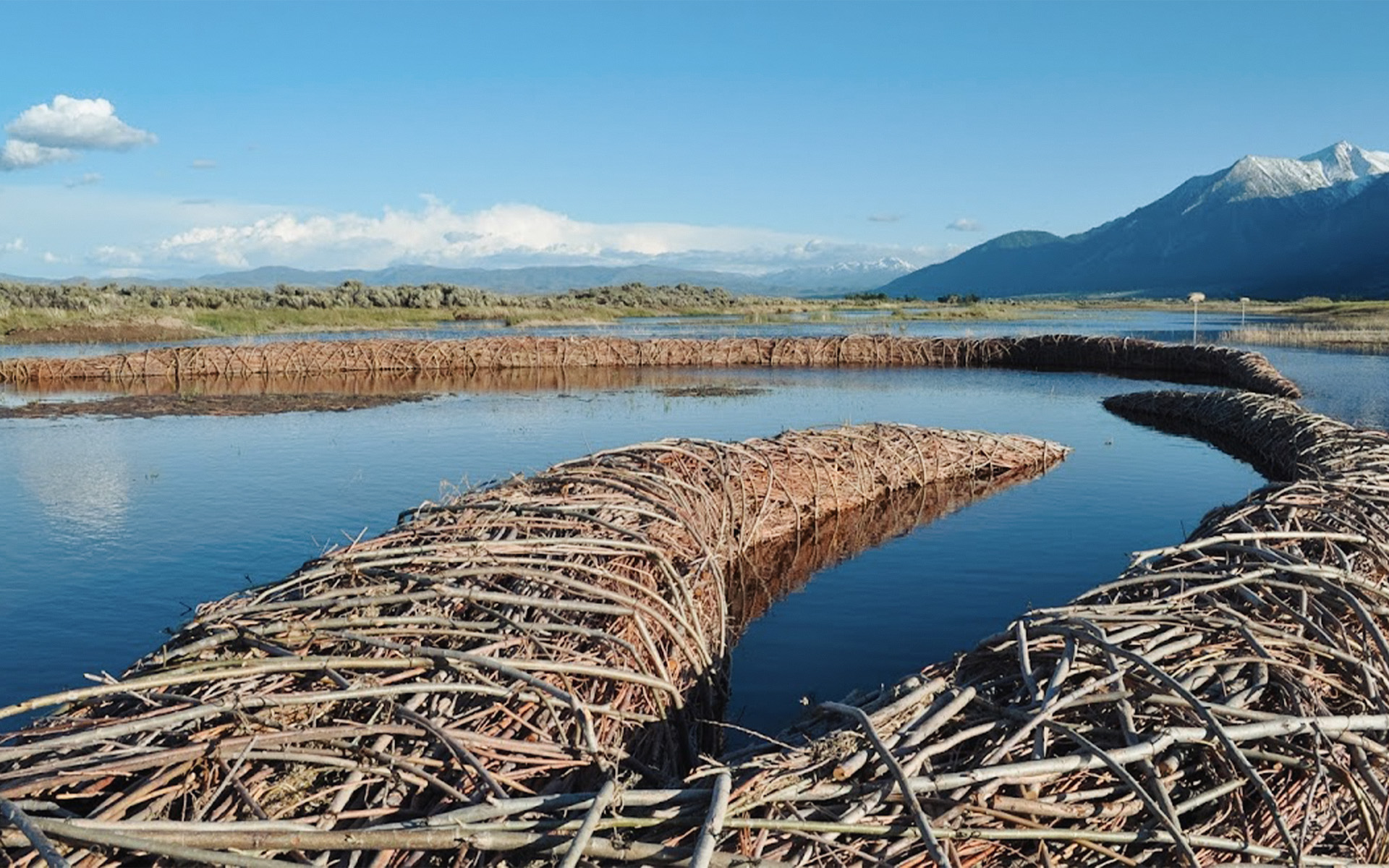
“Deep Seads” by Sean Yoro. Underwater art.
Hawaiian artist Sean Yoro creates underwater murals using environmentally safe materials. His aim is to raise awareness about the advancement of coral reef bleaching. “Deep Seads” is a series of murals constructed with eco-friendly and ecosystem-safe materials, submerged in the ocean. What’s fascinating is that these artworks serve as a foundation for new coral growth. These structures create artificial reefs that promote marine growth, becoming a thriving site for thousands of different organisms.
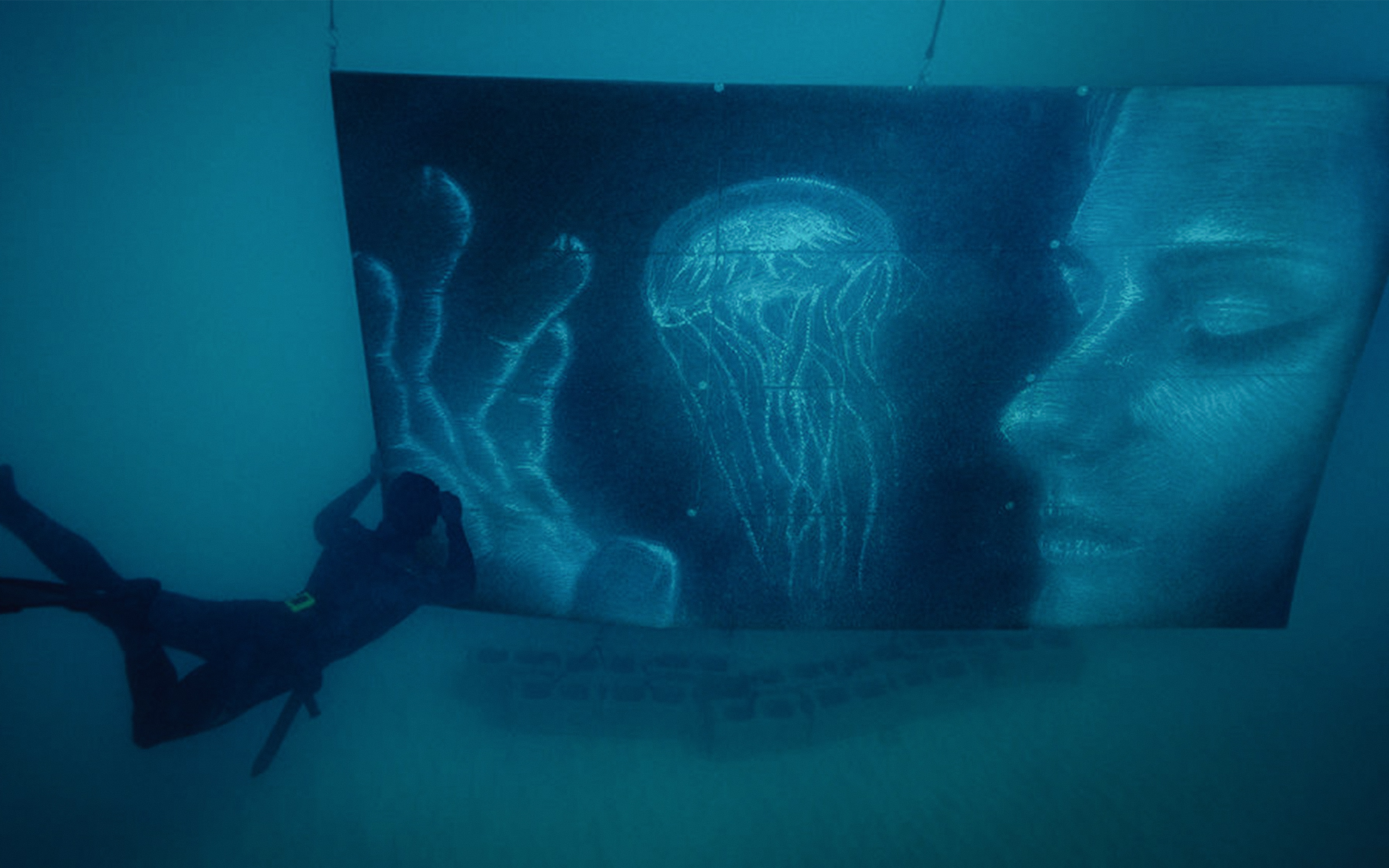
“Glacier Melt” series and “Ice Watch”
Another work we can mention is “Glacier Melt” by Olafur Eliasson. He’s an Icelandic-Danish artist who has created a series of photographs of several glaciers in Iceland in 1999 and 2019. During that time, the glaciers have experienced melting due to climate change.
Afterward, I photographed the same glaciers from the same angle and distance. Flying over the glaciers again, I was surprised to see the difference… Once a glacier melts, it disappears.”.
Olafur Eliasson
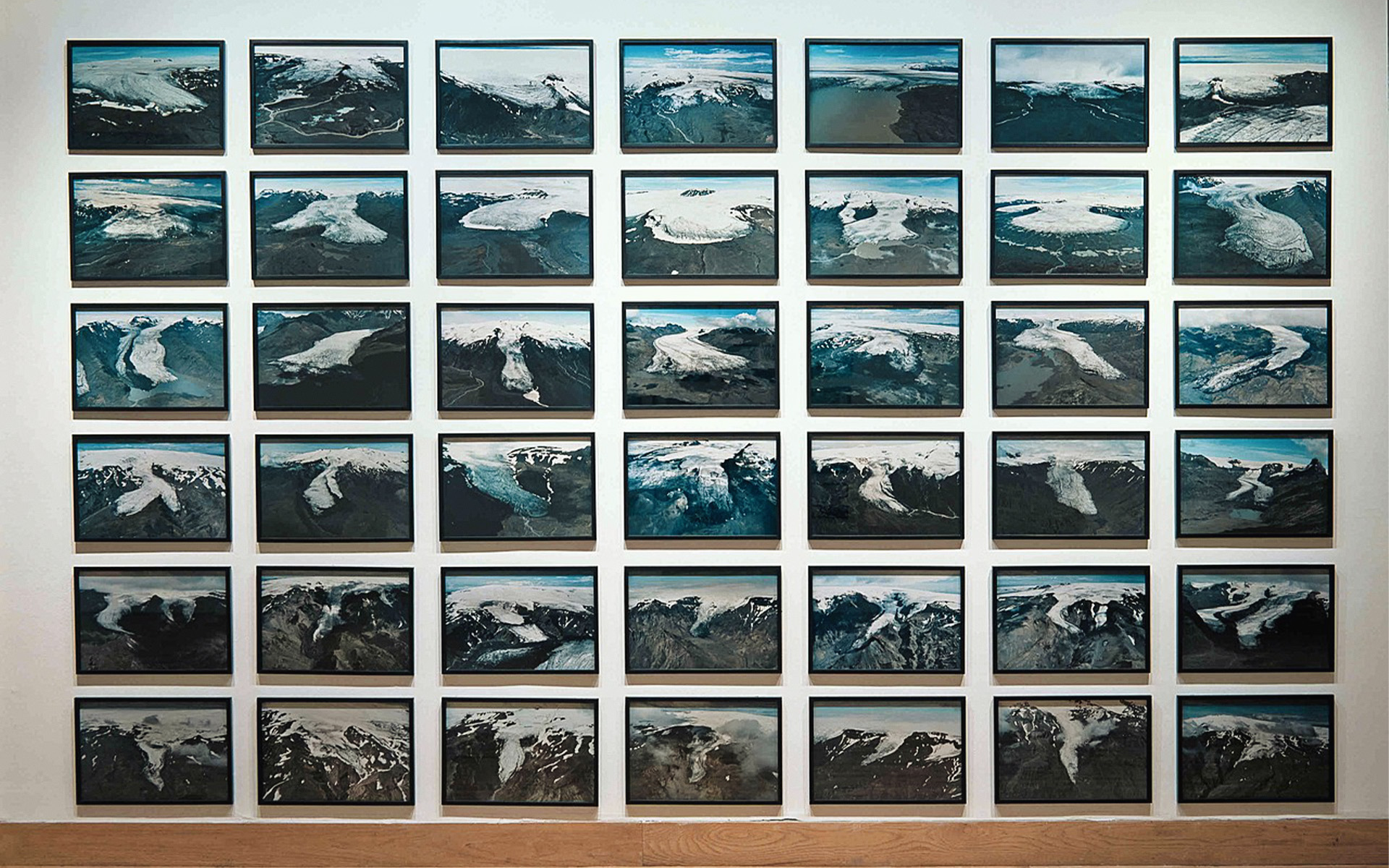
Additionally, Olafur Eliasson created the installation “Ice Watch,” which involved placing fragments of icebergs in public spaces to symbolize the urgency of taking action on climate change.
Twelve large ice blocks were detached from Greenland and collected from a fjord on the outskirts of Nuuk. They were then transported to Copenhagen, where they were displayed in the form of a clock in City Hall Square in 2014, to coincide with the Fifth Assessment Report on Climate Change by the IPCC of the UN. The ice pieces, which had not completely melted by the end of the three days, were donated to schools in Copenhagen.
“Ice Watch” was a physical wake-up call: the ice is melting. Sea levels are rising. Temperatures are increasing. Climate change is a fact.
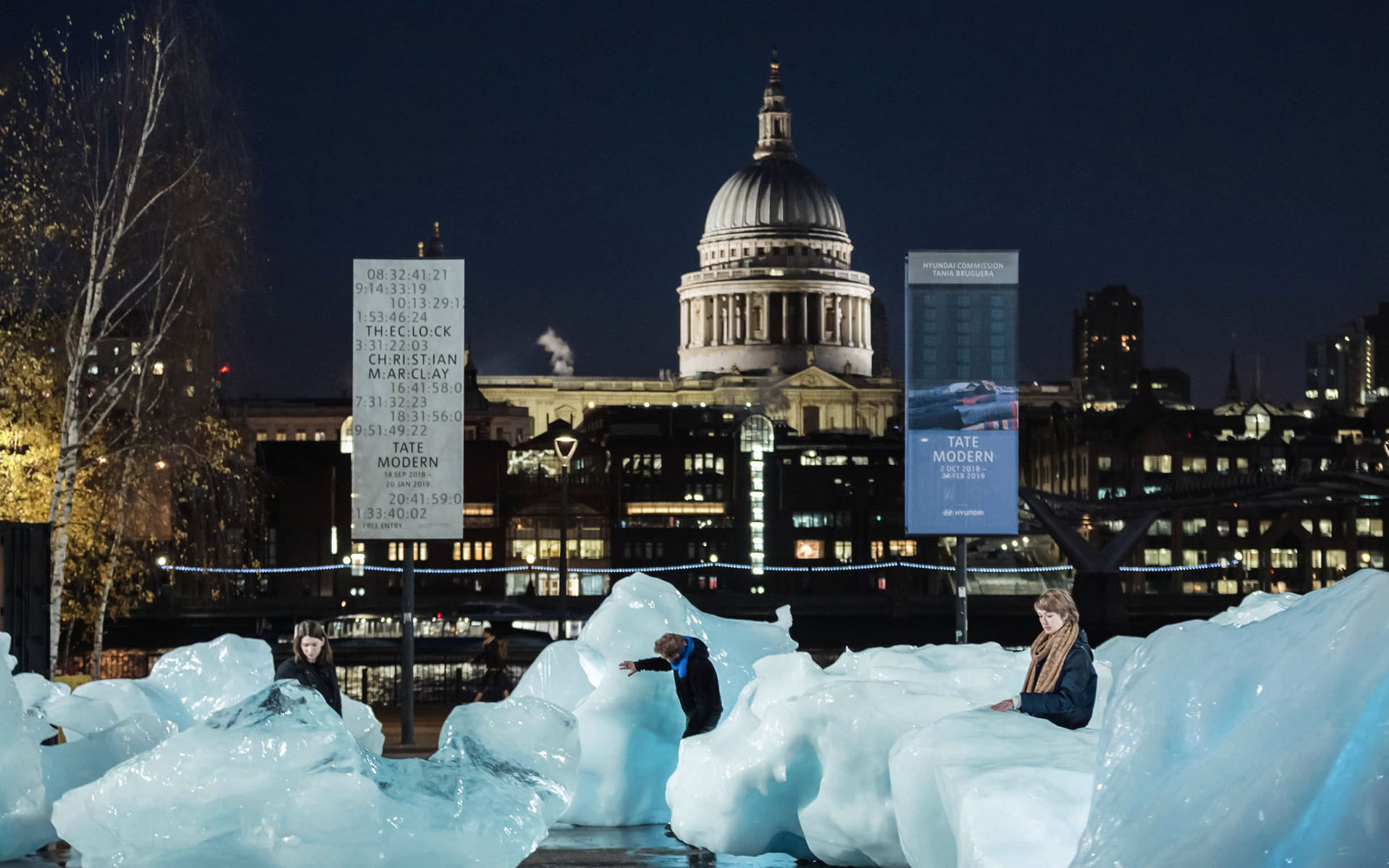
“Inherit the Dust” photographic series
Another compelling photographic series is “Inherit the Dust” by Nick Brandt. The exhibit includes life-size portraits of large mammals in their natural habitats mounted on panels in Kenya. The result is striking images placed in what once was their habitat and has now been transformed, by human action, into landfills and industrial areas full of debris and dirt.
After working in the African continent, Brandt became fascinated by the landscape and its richness. Through photography, he has created powerful images that convey the need for conservation of these species and their environment.
These are just a few examples of how artists are using their creativity to draw attention to global warming and foster positive change in society.
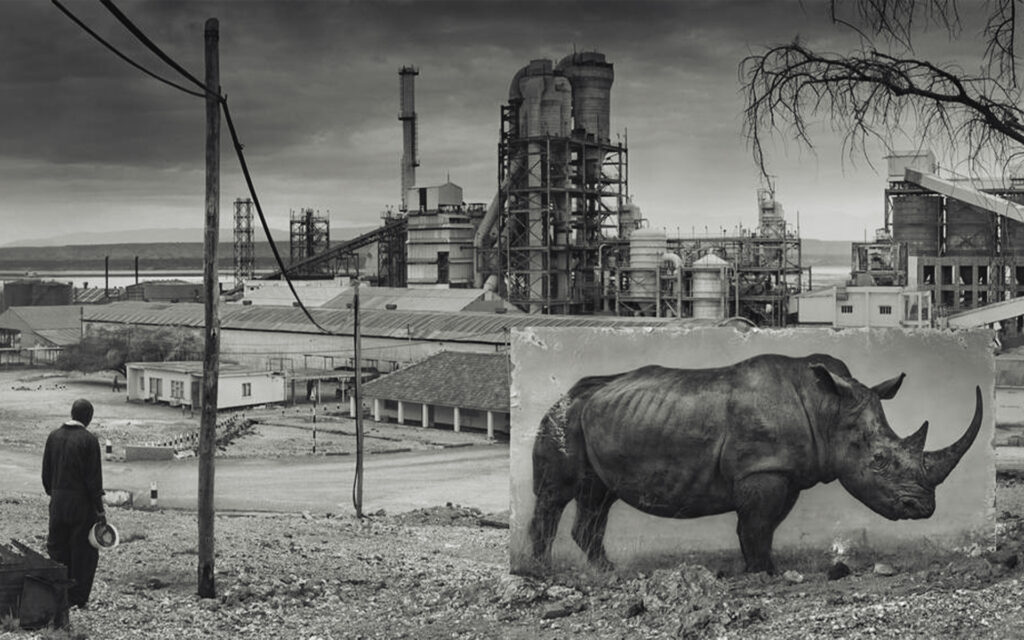
As we see, art itself cannot halt climate change. However, it is a very important tool for raising awareness, especially among younger generations, about these issues and leaving an ecological footprint on us. Do you know any others?





